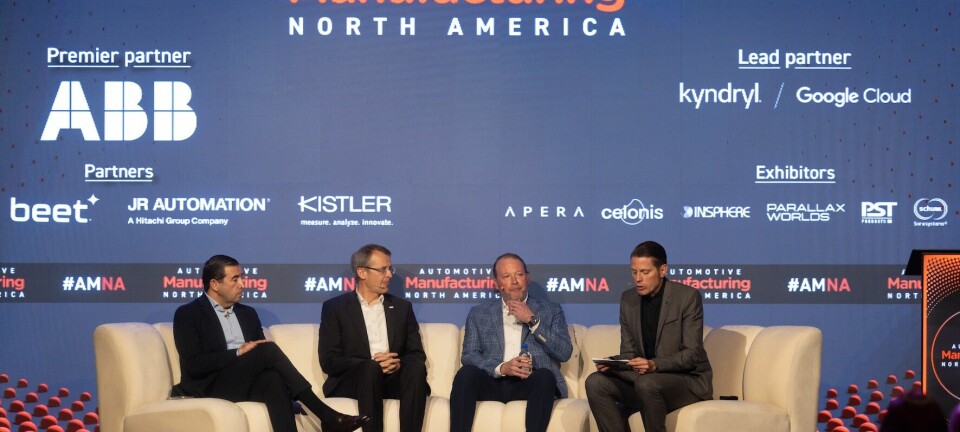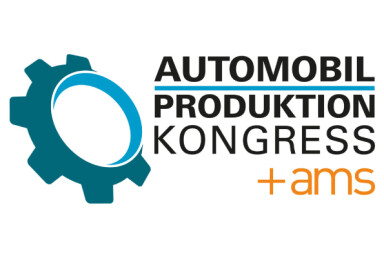Stellantis AI manufacturing innovations
Stellantis Factory Booster Day showcases AI driven manufacturing innovations

Stellantis gathered more than 80 partners in Detroit to unveil over 100 new solutions aimed at boosting efficiency, cutting downtime, and accelerating digital transformation across its global plants.
Anna Valeria Anllo, Head of Global Innovation for Vehicle Process Engineering at Stellantis, Offered some background, this year’s event: ‘This is a year-long process where we collect all our biggest challenges from the plants, from our plant managers and the people out on the shop floor and we send it out to our supplier network. We then pick the best solutions, presented at our Factory Booster Day, to hopefully then move forward and produce these proof of concepts in the next year.”
Tim Fallon, Senior Vice President, Global Head of Stellantis Production Way added: “We all know about the evolution of AI innovations and how these are continuing to evolve and drive our business. And this is a great showcase of how we are integrating that, working with our partners to solve real world problems.”
“We work with our Stellantis Venture Studio side, and they identify startups in the global network that can really help us find these key tailored solutions to our challenges.
Stellantis has a large pool of expertise to draw upon with around 500 suppliers on its list, but the some of the solutions pitched come from outside the existing supplier contacts, notably start-ups. Of the 50 start-ups invited to take part in the innovation process, 10 were selected to present their solutions to Stellantis. Valeria Anllo explained how these outlier companies were brought into the process: “We work with our Stellantis Venture Studio side, and they identify startups in the global network that can really help us find these key tailored solutions to our challenges. And helps us to keep innovating because we're not just relying on the main suppliers that are out there, we're really getting the young, fresh talent involved.”
Close collaboration key to success
Having a raft of new, workable solutions is one thing but developing and integrating them into the factory operations is key to the success of these types of projects and requires a high level of close collaboration between the factory teams and suppliers, both old and new. Valeria Anllo noted that the collaboration with suppliers and start-ups is very close, highlighting working with start-up Inbolt, a selected solution from last year’s Factory Booster event. This project aimed to upgrade the capabilities of standard industrial robots combining AI and vision systems. This system enables robots to adjust their trajectory and operations in real-time avoiding conflicts or impacts.
“Last year we highlighted a company called Inbolt. They came here to our site, and we had a proof of concept in our laboratory where we worked alongside with them. So, startups and regular suppliers, equally work hand in hand with us. This event does not happen without the support of our suppliers; it's a huge collaboration.”
Fallon also pointed to the fact that the proof of concept was being done within the plants rather than just externally and that many of these projects were being developed and implemented in plants across the OEM’s global network.
“It's becoming a very big part of planning and scheduling where you can use AI to take scheduling, utilisation, people availability data and put everything together to get the maximum utilisation of our people, reducing the amount of downtime that we have in the plants.
AI makes an impact
Artificial Intelligence is becoming a key enabler in the digitalisation of production operation, but it’s still an evolving technology. Fallon noted that AI is becoming a big part of Stellantis’ planning operations: “It's becoming a very big part of planning and scheduling where you can use AI to take scheduling, utilisation, people availability data and put everything together to get the maximum utilisation of our people, reducing the amount of downtime that we have in the plants. We are pushing very rapidly to get AI into the shop floor at different plants so that we can develop and continue to move forward with this technology.”
The challenges that the Stellantis teams had identified and put out to the supplier base resulted in more 1000 proposals being submitted. These were narrowed down the best 100 solutions. “We tried to pick one solution per challenge that we felt would best answer the problem, that we could find a plant manager to support it. It's really just finding those gems that are out there that we haven't seen before.” noted Valeria Anllo.
Some of the key ones included a forklift simulator (see below) using virtual reality, which has already been deployed in one of the plants to help with the safety and the training of the forklift associates. Another supplier brought in for ergonomics, offered a new system to help lift heavy loads, which has now also been trialed in a different application than what had expected. Fallon highlighted mobile and user-friendly metrology options able to scan parts quickly to get fast feedback, understand the dimensions of parts and identify any problems as important solutions to reduce waste and optimise production.
In the first 50 days, I think we saved, around $2m. And just as Tim mentioned, it's learning, it's creating that baseline, it's moving along with us and it's preventing us from having a potential catastrophic downtime
A solution employing AI to enhance predictive maintenance for paintshops (see box below) has proved successful. The sensor data gathered in the paintshop helps the AI to learn and more clearly identify potential problems; it also supports creating clearer performance baselines.
Fallon explained its value: “It is using the algorithms to learn and understand when we can truly maximise the assets without getting into catastrophic failure while we're running production. I've seen different predictive maintenance technologies come online throughout my career, and this one really is implementing AI to get both maximum benefit of the asset with minimising the amount of impact to production.”
This solution is supporting maintaining uptime and managing resources. By minimising equipment failures the paintshops maintain uptime, and maintain the equipment to nominal settings, so paint the application process operates at the established baseline, saving on materials usage.
Valeria Anllo noted some of the savings so far: “In the first 50 days, I think we saved, around $2m. And just as Tim mentioned, it's learning, it's creating that baseline, it's moving along with us and it's preventing us from having a potential catastrophic downtime.”
Developing solutions with wider applications
Although the Booster Day projects are focused on solutions for specific challenges, there is a strong emphasis on developing these for wider applications across the manufacturing operations. It was noted that solutions have been trialed across powertrain, welding, paintshop and logistics areas, where there is a common requirement, vision systems being cited as an example.
Fallon is leading a global initiative on vision systems. He pointed to value of these systems given the growing complexity of vehicle builds and associated systems but also the challenge of deploying the right solution. This, he noted, is being greatly supported with access to reliable and fast learning AI systems.
Innovation is a significant part of SPW and importantly integrating new innovations as we move forward, whether it be on a new or existing line
Stellantis Production Way
Fallon noted that innovation was a key part of the Stellantis Production Way (SPW) philosophy and that this approach sees production teams working much more upstream with design and engineering teams: “I would say that the working upstream and being very close between design, manufacturing and products is part of our DNA. I think there are opportunities to strengthen that, be a little bit more disciplined on exactly how we want those to work. This involves setting different milestones to make sure that all the stakeholders are getting their concerns addressed and if there happen to be any on the very front end where that integrates with Factory Booster Day.
“Innovation is a significant part of SPW and importantly integrating new innovations as we move forward, whether it be on a new or existing line.”
The Factory Booster Day solutions certainly deliver a lot of value to Stellantis’ manufacturing operations at both shopfloor and global network levels and demonstrate how important closer working relationships between OEM and suppliers are becoming.







